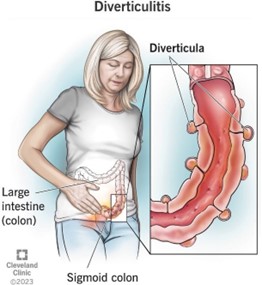A nurse is assisting with menu selections for a client who has recovered from the acute phase of diverticulitis. Which of the following foods should the nurse recommend?
Roast chicken with white rice
A poached egg with sliced tomatoes
Bean soup with steamed broccoli
Ham sandwich on white bread
The Correct Answer is A
Choice A reason: Roast chicken with white rice is a low-fiber, easy-to-digest meal that is suitable for a client who has recovered from the acute phase of diverticulitis. A low-fiber diet can help reduce the stress on the colon and allow it to heal. White rice is a refined grain that has less fiber than whole grains, such as brown rice or quinoa12.
Choice B reason: A poached egg with sliced tomatoes is not a good choice for a client who has recovered from the acute phase of diverticulitis. Although eggs are a good source of protein and do not contain fiber, tomatoes are high in fiber and may irritate the colon. Tomatoes also have seeds, which were previously thought to cause problems for people with diverticular disease, but there is no evidence to support this. However, some people may still find them uncomfortable to eat13.
Choice C reason: Bean soup with steamed broccoli is not a good choice for a client who has recovered from the acute phase of diverticulitis. Beans and broccoli are both high in fiber and may cause gas, bloating, and cramping in the colon. A high-fiber diet is recommended for people with diverticulosis (the presence of pouches without inflammation) to prevent constipation and diverticulitis, but it should be avoided during or shortly after an episode of diverticulitis12.
Choice D reason: Ham sandwich on white bread is not a good choice for a client who has recovered from the acute phase of diverticulitis. Although white bread is low in fiber, ham is a processed meat that may increase the risk of developing diverticular disease. Research suggests that a diet high in red meat and processed meat may contribute to inflammation and infection of the pouches in the colon.

Nursing Test Bank
Naxlex Comprehensive Predictor Exams
Related Questions
Correct Answer is B
Explanation
Choice A: Provide bulk-forming agent. This is incorrect because bulk-forming agents are used to treat constipation, not bowel obstruction. They can worsen the obstruction by increasing the stool volume and pressure in the bowel.
Choice B: Elevate the head of the bed. Elevating the head of the bed is an important intervention for clients with a small bowel obstruction. It can help reduce abdominal pressure, promote comfort, and facilitate better respiratory function, especially if the client is experiencing any associated nausea or vomiting. This position can also aid in the proper positioning of the intestines, potentially helping with any non-complicated obstructions.
Choice D: Monitor intake and output every 8 hr. This is incorrect because monitoring intake and output is not enough to assess the fluid and electrolyte balance of a client with a bowel obstruction. The nurse should monitor intake and output more frequently, such as every 4 hr or every shift, and report any signs of dehydration or imbalance.
Choice C: Measure abdominal girth daily. While this is an important assessment for monitoring the status of the obstruction, the immediate intervention of elevating the head of the bed can provide immediate comfort and support during the acute phase of the obstruction.
Correct Answer is A
Explanation
Choice A: “I will feel shaky.” This is a correct statement, as shakiness is a common manifestation of hypoglycemia, which is a low blood glucose level. Hypoglycemia can cause the sympathetic nervous system to release adrenaline, which can cause tremors, nervousness, and anxiety.
Choice B: “My skin will be warm and moist.” This is an incorrect statement, as warm and moist skin is not a typical manifestation of hypoglycemia. Warm and moist skin can be a sign of hyperglycemia, which is a high blood glucose level. Hyperglycemia can cause dehydration, which can lead to sweating and flushing.
Choice C: “I will be more thirsty than usual.” This is an incorrect statement, as thirst is not a typical manifestation of hypoglycemia. Thirst can be a sign of hyperglycemia, which can cause dehydration, as the body tries to flush out excess glucose through urine.
Choice D: “My appetite will be decreased.” This is an incorrect statement, as decreased appetite is not a typical manifestation of hypoglycemia. Decreased appetite can be a sign of other conditions, such as nausea, infection, or depression. Hypoglycemia can cause increased hunger, as the body needs more glucose to function properly.

Whether you are a student looking to ace your exams or a practicing nurse seeking to enhance your expertise , our nursing education contents will empower you with the confidence and competence to make a difference in the lives of patients and become a respected leader in the healthcare field.
Visit Naxlex, invest in your future and unlock endless possibilities with our unparalleled nursing education contents today
Report Wrong Answer on the Current Question
Do you disagree with the answer? If yes, what is your expected answer? Explain.
Kindly be descriptive with the issue you are facing.
